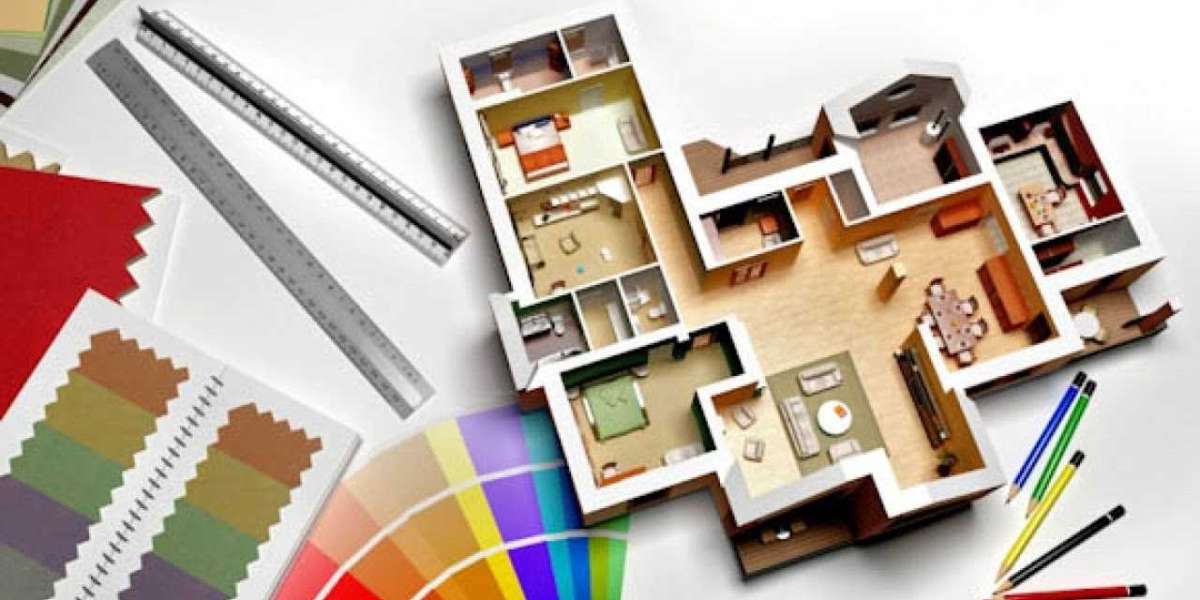A journey to study interior design
Interior design is an exhilarating field that blends artistic flair with practical functionality to transform spaces into aesthetically pleasing and efficient environments. If you harbor a passion for design, color schemes, and spatial arrangements, embarking on a journey to study interior design could be the key to a rewarding career. In this comprehensive guide, we'll explore the various requirements and considerations involved in pursuing interior design courses, helping you chart a course towards your creative aspirations.
Section 1: Educational Background
1.1 High School Diploma or Equivalent:
The foundation of any educational pursuit is a high school diploma or its equivalent, such as a GED. Most interior design programs require applicants to have completed their secondary education as a minimum eligibility criterion. A strong academic background, particularly in subjects like art, mathematics, and physics, can be advantageous.
1.2 Portfolio Submission:
While not a formal educational requirement, a well-crafted portfolio showcasing your artistic abilities and creativity is often a significant aspect of the application process. Portfolios provide admissions committees with a glimpse into your design aesthetic, drawing skills, and innovative thinking. Aspiring interior designers should include sketches, drawings, and any relevant design projects in their portfolios.
Section 2: Educational Pathways
2.1 Associate Degrees:
For those eager to kickstart their interior design journey, associate degree programs offer a practical and focused curriculum. These programs typically take around two years to complete and provide a solid foundation in design principles, spatial planning, and material selection. Earning an associate degree can be an excellent way to enter the workforce sooner while gaining essential design knowledge.
2.2 Bachelor's Degrees:
A bachelor's degree in interior design is a more comprehensive and in-depth educational option. These programs, which typically span four years, delve into advanced design concepts, project management, and the use of design software. A bachelor's degree not only enhances your design skills but also opens doors to a broader range of career opportunities within the field.
Section 3: Accredited Interior Design Programs
3.1 Accreditation Matters:
When considering interior design courses, it's crucial to opt for programs accredited by recognized accrediting bodies. Accreditation ensures that the program meets specific standards of quality and relevance in the industry. The Council for Interior Design Accreditation (CIDA) is a prominent accrediting organization for interior design programs in the United States.
3.2 Researching Institutions:
Take the time to research and compare interior design programs offered by various institutions. Consider factors such as faculty credentials, course curriculum, internship opportunities, and alumni success stories. Reading reviews and seeking feedback from current or former students can provide valuable insights into the program's strengths and weaknesses.
Section 4: Technical Skills and Software Proficiency
4.1 Design Software Proficiency:
In the digital age, proficiency in design software is a valuable asset for aspiring interior designers. Familiarity with industry-standard tools like AutoCAD, SketchUp, and Adobe Creative Suite can significantly enhance your ability to visualize and communicate design concepts. Some programs may include software training as part of the curriculum, while others may expect students to have a basic understanding before enrollment.
4.2 Technical Drawing Skills:
Interior designers often communicate their ideas through technical drawings, including floor plans, elevations, and perspectives. Developing strong technical drawing skills is essential for effectively conveying design concepts to clients and collaborating with architects and contractors. Look for programs that incorporate technical drawing into their coursework.
Section 5: Practical Experience and Internships
5.1 Internship Opportunities:
Practical experience is a vital component of an interior design education. Many programs include internship opportunities as part of their curriculum, allowing students to gain hands-on experience in real-world design projects. Internships provide valuable insights into the industry, help build a professional network, and enhance your portfolio.
5.2 Industry Connections:
Consider programs that have strong ties with the industry, offering students opportunities to connect with professionals, attend design events, and participate in design competitions. Building a network during your studies can open doors to potential job opportunities and collaborations after graduation.
Section 6: Building a Professional Network
6.1 Joining Professional Organizations:
While still a student, consider joining professional organizations such as the American Society of Interior Designers (ASID) or the International Interior Design Association (IIDA). These organizations offer resources, networking events, and mentorship opportunities that can be invaluable as you navigate your career in interior design.
6.2 Attending Design Events and Conferences:
Immerse yourself in the design community by attending industry events, conferences, and trade shows. These gatherings provide opportunities to meet professionals, explore the latest trends, and gain inspiration for your own design projects.
Section 7: Developing Soft Skills
7.1 Effective Communication:
Interior designers must effectively communicate their ideas to clients, team members, and contractors. Developing strong verbal and written communication skills is crucial for successfully conveying design concepts, addressing client needs, and collaborating with others in the industry.
7.2 Time Management and Organization:
Interior design projects often come with tight deadlines and multiple tasks to manage simultaneously. Cultivating effective time management and organizational skills will help you navigate the demands of the profession and deliver projects successfully.
Section 8: Funding Your Education
8.1 Scholarships and Financial Aid:
Explore scholarship opportunities and financial aid options to alleviate the cost of your interior design education. Many institutions, professional organizations, and private entities offer scholarships specifically for students pursuing careers in design. Researching and applying for these opportunities can make your education more accessible.
8.2 Part-Time Work or Freelancing:
Consider supplementing your income by taking on part-time work or freelancing in design-related projects. Not only does this provide practical experience, but it also allows you to apply your skills in real-world scenarios while earning some income to support your education.
Conclusion:
Embarking on a journey to study interior design involves a combination of educational qualifications, practical skills, and a passion for creativity. By understanding the requirements and considerations outlined in this guide, you can make informed decisions about your educational path, choose the right program, and prepare yourself for a fulfilling career in the dynamic world of interior design. Remember, the key to success in this field lies not only in formal education but also in continuous learning, networking, and a genuine passion for bringing spaces to life through innovative design.



